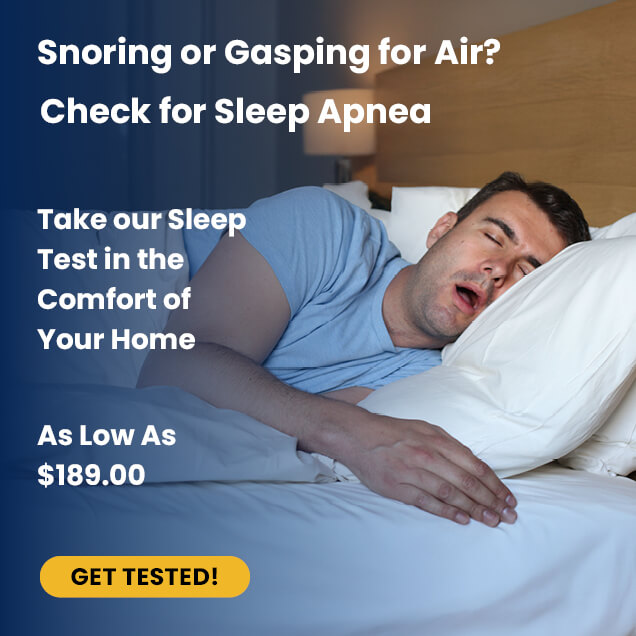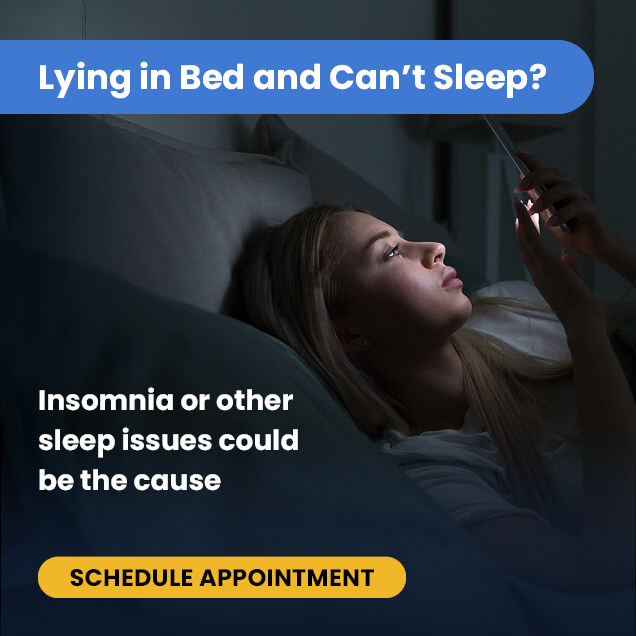About Short Sleep Duration | Causes | Signs and Symptoms | Risk Factors | Diagnosis | Treatment
Overview
Individuals between the ages of 17 and 24 may not be getting the restorative sleep they need for optimal health and overall wellbeing, which may lead to a condition called short sleep duration.
Chronic sleeplessness increases the risk of depression, diabetes, obesity, and heart disease. Additionally, it may be a significant risk factor for motor vehicle accidents.
Keep reading to know more about how short sleep duration can affect health, and the treatments and strategies available to manage it.
About Short Sleep Duration
Short sleep duration is a common sleep issue characterized by sleeping for less than 6 hours each night. Lack of sleep is one of the most common causes of chronic disorders, including diabetes and obesity.
Sleep deprivation may also affect the brain’s development in an area called the frontal lobe, which is critical for controlling impulsive behavior. Studies have found that teenagers who do not get enough sleep are at a higher risk of engaging in high-risk behaviors.[1]
One study of high school students found that for each hour of sleep lost, the odds of participation in risky behaviors, such as tobacco, alcohol, and marijuana use increased by 23%.[2] A recent study shows that sleep-deprived young drivers are at a greater risk of accidents at night.[3]
Causes
Circadian Sleep-Wake Disorder
Circadian rhythm, such as delayed sleep-wake disorder, can be both a cause and an effect of short sleep duration.
When the circadian rhythm is out of sync, it leads to disruptions in the body’s internal sleep-wake cycle that follows the earth’s 24-hour rotation.
For young adults, the incidence of circadian rhythm disorder is common due to the tendency to stay awake for longer hours. Typically, young adults have difficulty limiting their hours on social media, playing games, and watching videos, and often do so well into the early hours of the morning.
This tendency to stay awake at night can reset the sleep-wake cycle, causing a shift in the sleep/wake time. Young adults feel exhausted and irritable following a sleepless night or sleep through until early afternoon, affecting their ability to study or perform tasks.[4]
Chronic Insomnia
Chronic insomnia is sleeplessness that persists for 3 months or longer and is characterized by trouble falling asleep, staying asleep, or waking up too early.
Young adults can experience sleeplessness due to poor sleep hygiene, or concomitant conditions, such as depression, chronic pain, or gastroesophageal reflux. These conditions must be addressed separately from insomnia for sleep to improve.
Obstructive Sleep Apnea (OSA)
OSA is more common in middle-aged adults; however, it can be associated with disturbed sleep, daytime sleepiness, and behavior problems in teenagers and young adults.
OSA causes pauses in breathing due to airway obstruction. The brain sends signals to the body, rousing the person from sleep so that they can get the oxygen they need. These awakenings are signified by snoring and a loud snort as they gasp for air.
This cycle can happen up to 300 times a night, preventing the person from reaching the REM sleep phase, or slow-wave sleep, which is necessary for restorative sleep.
The young adult may not be aware that their sleep is being disturbed; however, they may be experiencing the symptoms of daytime sleepiness, headaches, increased appetite, and weight gain, which are associated with inadequate sleep.
Restless Legs Syndrome (RLS)
RLS is a neurological condition that disturbs sleep due to a recurring need to move limbs, particularly the legs. It can negatively impact sleep onset and sleep maintenance, leading to short sleep duration and daytime sleepiness. There’s a frequent co-occurrence with ADHD, mood disorders, and anxiety disorders.[5][6]
Alcohol and Stimulants
Alcohol
Short sleep duration is a precursor of alcohol-related problems, including binge drinking, drunken driving, and engaging in activities while drinking that are later regretted.[7]
Initially, alcohol consumption may shorten sleep onset latency. However, as alcohol consumption becomes chronic, it has less of a hypnotic effect, causing difficulty falling asleep, frequent awakenings, daytime sleepiness, and abnormal sleep quality.[8]
Smoking
Studies have identified smoking as one of the factors responsible for sleep issues in young people. The nicotine in cigarettes is a stimulant and is associated with delayed sleep onset and frequent awakenings.[9] [10]
Caffeine
The stimulant action of caffeine interferes with sleep and reduces total sleep duration. Caffeine blocks adenosine, a sleep-inducing compound in the brain, from binding to receptors. This action results in increased nerve cell activity, leading to wakefulness.
Signs & Symptoms
- Reduced memory and attention span
- Reduced productivity at the workplace or school
- Excessive drowsiness and lack of attention[11]
- Poor emotional health
- Anger, irritability, and aggressive behavior
- Increased risk of alcohol and drug abuse
- Increased risk of depression, anxiety, and bipolar disorders[12]
- Obesity
- Poor decision-making and rational thinking skills
- A tendency to indulge in risky behaviors
- Increased risk of accidents
Risk Factors
- Excessive use of smartphones
- Smoking
- Alcohol intake
- Peer pressure
- FOMO (fear of missing out)
- Obesity
- Excessive consumption of caffeinated beverages
- Preexisting sleep disorders like circadian sleep-wake disorder, obstructive sleep apnea, insomnia, and restless leg syndrome
- Chronic conditions that cause discomfort and interfere with sleep maintenance, like back pain or arthritis
Diagnosis
Questionnaires
The diagnosis of short sleep duration can be made based on typical symptoms and an assessment of lifestyle habits. The doctor may administer a sleep questionnaire, like the Sleep Timing Questionnaire (STQ), that collects information regarding 2 weeks’ worth of sleep data, which is similar to that which is found in a sleep diary.
Alternately, the doctor may request that sleep be documented in a diary, which records the total time spent sleeping, wake times, the occurrence of daytime sleepiness, and the frequency of naps.
Polysomnography
Polysomnography is commonly recommended for the diagnosis of sleep issues. Polysomnography is performed in a laboratory while you are asleep. The doctor makes observations, records the parameters of the sleep patterns, and checks for the signs of sleep disorders. This test can help to detect the root cause of sleep deprivation like sleep apnea.[13]
Actigraphy
An actigraphy uses a non-invasive portable device called an accelerometer that monitors activity and rest cycles during the day. This device is worn on the wrist or ankle. This test helps determine different sleep parameters, such as total sleep duration and the periods of wakefulness. This test usually lasts for one week and provides information about sleep patterns.
Treatment
Maintaining sleep hygiene by adopting healthy bedtime habits could restore a healthy sleep-wake cycle and provide relief from the symptoms of short sleep duration. These steps include:
- Developing a nighttime routine, such as having a consistent sleep and wake time
- Avoiding the use of stimulants, like caffeine and nicotine before bedtime
- Limiting alcohol intake
- Limiting daytime naps to less than 30 minutes, and no later than 3 pm in the day
Avoiding the use of electronic devices is also an important part of maintaining sleep hygiene. Electronic devices, such as cell phones and laptops, should be avoided in the evening hours. The blue light emitted from these devices may reduce melatonin secretion in the brain and prevent sleep. [14]
Resetting Your Circadian Sleep Rhythm
Developing a nighttime routine can also retrain your brain and help you follow a consistent sleep-wake pattern. Adjusting your sleep routine requires you to create consistency in your sleep habits. Creating a consistent bedtime routine and adhering to a schedule can help your body get used to the new circadian rhythm more easily.
The first step to resetting your sleep schedule is to pick suitable bedtime and wake-up time. Follow the same schedule every day, including weekends.
At first, you might find it hard to adjust to the new sleep-wake schedule; however, this is normal. Your body will need time to adapt to the new cycle.
Alternatively, you can reset your sleep schedule gradually by making adjustments in 15- to 20-minutes increments over 7 days. For example, if you are used to sleeping at 12 midnight, you can start by sleeping early at 11:45 pm in the first week.
As the body gets adjusted to the new sleeping time, it can be advanced another 15 minutes, i.e. at 11:30 pm, the next week. This process should be continued until a suitable bedtime is reached.
Insomnia
If your sleeplessness persists and is caused by insomnia, you may be a candidate for cognitive behavioral therapy for insomnia (CBT-I). It’s a comprehensive therapy that helps alter how you think and feel about sleep.
Conclusion
Early detection of short sleep duration in young adults is critical for preventing chronic conditions, like depression and the risk of accidents. Making appropriate changes to the sleep-wake routine, addressing insomnia, adopting healthy sleep hygiene practices, and treating comorbid conditions is the key to restoring a healthy sleep pattern and feeling fresh and alert during the daytime.
References:
- Wheaton, A. G., Olsen, E. O., Miller, G. F., & Croft, J. B. (2016). Sleep Duration and Injury-Related Risk Behaviors Among High School Students–United States, 2007-2013. MMWR. Morbidity and mortality weekly report, 65(13), 337–341. https://doi.org/10.15585/mmwr.mm6513a1
- Winsler, A., Deutsch, A., Vorona, R. D., Payne, P. A., & Szklo-Coxe, M. (2015). Sleepless in Fairfax: the difference one more hour of sleep can make for teen hopelessness, suicidal ideation, and substance use. Journal of youth and adolescence, 44(2), 362–378. https://doi.org/10.1007/s10964-014-0170-3
- Martiniuk ALC, Senserrick T, Lo S, et al. Sleep-Deprived Young Drivers and the Risk for Crash: The DRIVE Prospective Cohort Study. JAMA Pediatr.2013;167(7):647–655. doi:10.1001/jamapediatrics.2013.1429
- Hysing, M., Harvey, A. G., Linton, S. J., Askeland, K. G., & Sivertsen, B. (2016). Sleep and academic performance in later adolescence: results from a large population-based study. Journal of sleep research, 25(3), 318–324. https://doi.org/10.1111/jsr.12373
- Silva, G. E., Goodwin, J. L., Vana, K. D., Vasquez, M. M., Wilcox, P. G., & Quan, S. F. (2014). Restless legs syndrome, sleep, and quality of life among adolescents and young adults. Journal of clinical sleep medicine : JCSM : official publication of the American Academy of Sleep Medicine, 10(7), 779–786. https://doi.org/10.5664/jcsm.3872
- Picchietti, D. L., Bruni, O., de Weerd, A., Durmer, J. S., Kotagal, S., Owens, J. A., Simakajornboon, N., & International Restless Legs Syndrome Study Group (IRLSSG) (2013). Pediatric restless legs syndrome diagnostic criteria: an update by the International Restless Legs Syndrome Study Group. Sleep medicine, 14(12), 1253–1259. https://doi.org/10.1016/j.sleep.2013.08.778
- Wong, M. M., Robertson, G. C., & Dyson, R. B. (2015). Prospective relationship between poor sleep and substance-related problems in a national sample of adolescents. Alcoholism, clinical and experimental research, 39(2), 355–362. https://doi.org/10.1111/acer.12618
- Angarita, G.A., Emadi, N., Hodges, S. et al. Sleep abnormalities associated with alcohol, cannabis, cocaine, and opiate use: a comprehensive review. Addict Sci Clin Pract 11, 9 (2016). https://doi.org/10.1186/s13722-016-0056-7
- Caviness, C. M., Anderson, B. J., & Stein, M. D. (2019). Impact of Nicotine and Other Stimulants on Sleep in Young Adults. Journal of addiction medicine, 13(3), 209–214. https://doi.org/10.1097/ADM.0000000000000481
- Lohsoonthorn, V., Khidir, H., Casillas, G., Lertmaharit, S., Tadesse, M. G., Pensuksan, W. C., Rattananupong, T., Gelaye, B., & Williams, M. A. (2013). Sleep quality and sleep patterns in relation to consumption of energy drinks, caffeinated beverages, and other stimulants among Thai college students. Sleep & breathing = Schlaf & Atmung, 17(3), 1017–1028. https://doi.org/10.1007/s11325-012-0792-1
- Perez-Lloret, S., Videla, A. J., Richaudeau, A., Vigo, D., Rossi, M., Cardinali, D. P., & Perez-Chada, D. (2013). A multi-step pathway connecting short sleep duration to daytime somnolence, reduced attention, and poor academic performance: an exploratory cross-sectional study in teenagers. Journal of clinical sleep medicine : JCSM : official publication of the American Academy of Sleep Medicine, 9(5), 469–473. https://doi.org/10.5664/jcsm.2668
- de Zambotti, M., Goldstone, A., Colrain, I. M., & Baker, F. C. (2018). Insomnia disorder in adolescence: Diagnosis, impact, and treatment. Sleep medicine reviews, 39, 12–24. https://doi.org/10.1016/j.smrv.2017.06.009
- Rundo, J. V., & Downey, R., 3rd (2019). Polysomnography. Handbook of clinical neurology, 160, 381–392. https://doi.org/10.1016/B978-0-444-64032-1.00025-4
- Tähkämö, L., Partonen, T., & Pesonen, A. K. (2019). Systematic review of light exposure impact on human circadian rhythm. Chronobiology international, 36(2), 151–170. https://doi.org/10.1080/07420528.2018.1527773






